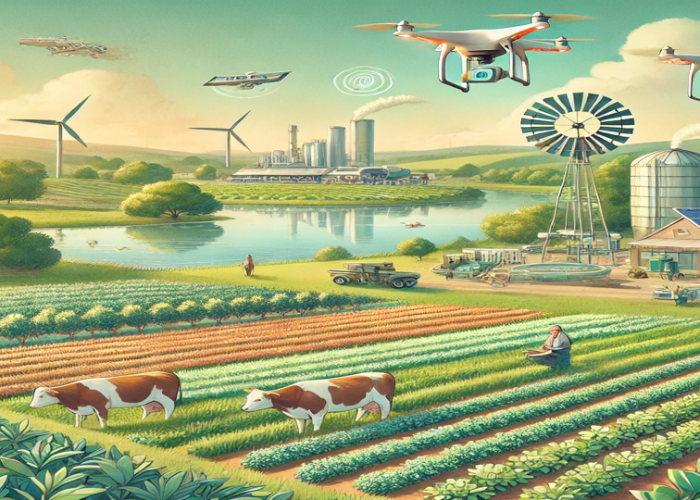G7 Agriculture: How We Feed the World25 SEPTEMBER 2024, ORTIGIA
- 27 September 2024
- Posted by: Competere
- Category: Senza categoria

Pietro Paganini spoke at the G7 Agriculture side event in Ortigia, dedicated to Technological Innovation in the Agricultural Sector. During his speech, he emphasized the urgency of increasing agricultural productivity to ensure food security and address global challenges, from the climate crisis to biodiversity loss. Only through technical and technological innovation, such as regenerative livestock farming, can we build a sustainable agricultural future, capable of regenerating ecosystems and supporting local communities.
PRODUCTIVITY EMERGENCY
The critical challenge is to increase agricultural productivity. If we don’t boost productivity, we won’t ensure the food security needed to feed a growing population, leading to disastrous environmental consequences.
- We cannot pursue environmental sustainability without improving production efficiency.
- No sustainability policy can succeed without first ensuring food security.
TECHNIQUE, TECHNOLOGY, AND INNOVATION
REGENERATIVE LIVESTOCK FARMING: AN INNOVATIVE APPROACH TO ANIMAL HUSBANDRY
Regenerative livestock farming integrates ecological, managerial, and technological principles to create sustainable farming systems. This approach not only promotes the sustainable production of animal products but also regenerates and enhances natural ecosystems. Key practices include:
- Holistic pasture management: strategic livestock rotation to mimic the natural movements of wild animals, allowing soil and vegetation to regenerate.
- Biodiversity enhancement: introducing a variety of plant and animal species to create more resilient ecosystems.
- Soil health: increasing organic matter in the soil, improving fertility and water retention.
- Food loss reduction: efficient use of resources to avoid unnecessary waste.
- Animal welfare: respecting the physiological and behavioral needs of animals, improving their health and productivity.
- Carbon sequestration: capturing atmospheric carbon and storing it in the soil, contributing to climate change mitigation.
- Food security: ensuring stable food production.
- Long-term economic benefits: reducing operating costs by decreasing the use of chemical fertilizers, pesticides, and antibiotics. It increases the resilience of farms to extreme weather events and diseases and provides access to premium markets for high-quality products.
- Social and community benefits: supporting rural communities by creating jobs and economic opportunities, improving the quality of food products, and raising awareness of agricultural sustainability.
OSBSTACLES TO TRANSITION
Despite the numerous benefits, the transition to regenerative livestock farming faces several economic and cultural barriers:
- Resistance to change and traditional mindsets: entrenched habits and fear of risk can hinder the adoption of new practices.
- High initial investments and implementation costs: regenerative technologies require significant investments, often difficult to bear without adequate funding.
- Limited access to credit and funding: many farmers struggle to obtain the necessary funds to adopt new technologies.
- Training and technical skills: continuous training is essential to ensure that farmers can effectively use new technologies.
- Knowledge of technologies and access to markets: lack of knowledge and low consumer demand can limit the success of regenerative practices.
G7: CALL TO ACTION
A favorable environment is needed to support the adoption of regenerative livestock farming through financial incentives, technical training, and consumer awareness promotion.
